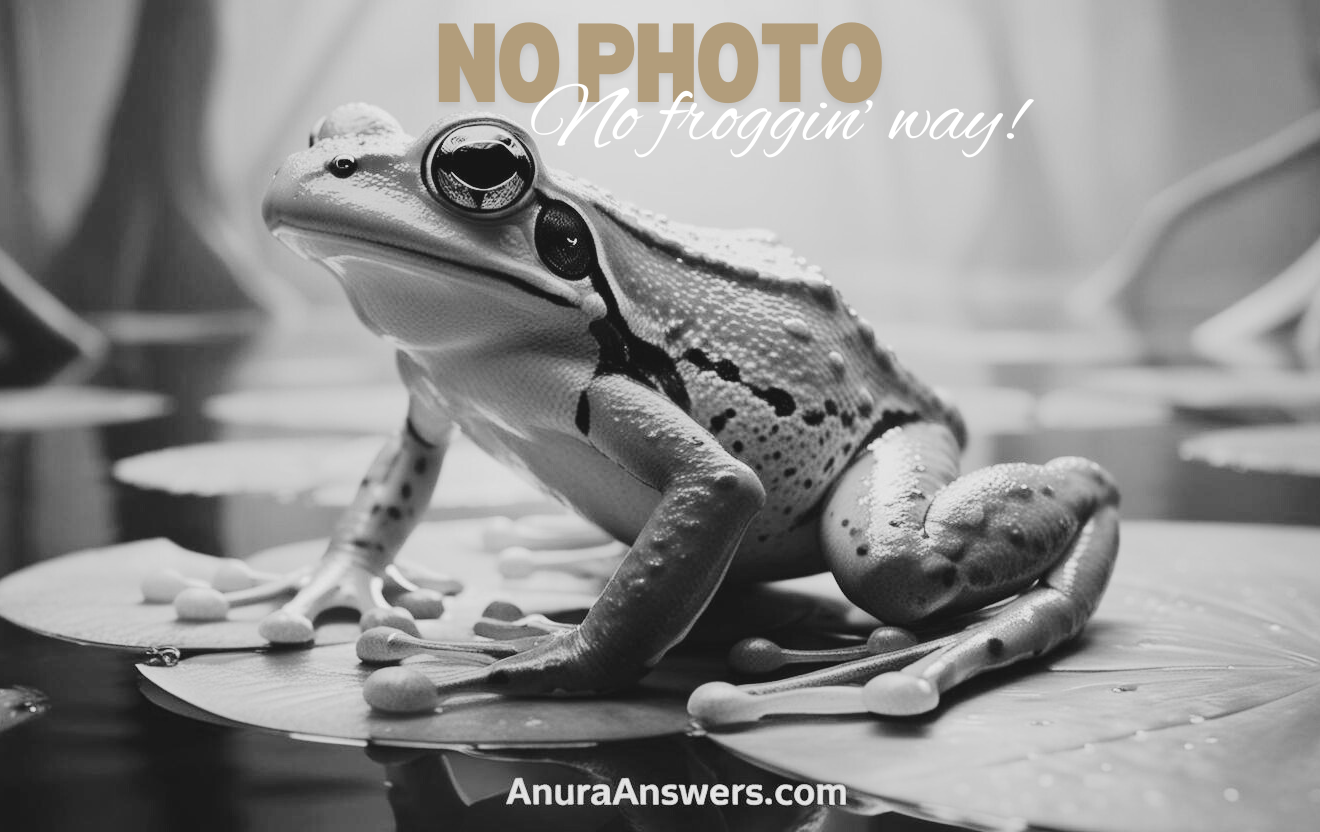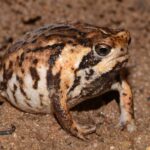- Introduction: The Quiet Guardian of the Amazonian Leaf Litter
- Taxonomy and Classification: Understanding the Family Tree
- Natural Habitat: Immersed in Brazil’s Rich Biodiversity
- Physical Characteristics: Mastery through Camouflage and Subtlety
- Behavior and Life Cycle: Intricate Patterns of Survival
- Ecological Role: Small Frog, Immense Impact
- Threats and Conservation Status: Safeguarding a Fragile Existence
- Cultural and Scientific Significance: Symbols of Amazement and Discovery
- Conclusion: Celebrating the Humble Guardian of Brazil's Rainforests
Introduction: The Quiet Guardian of the Amazonian Leaf Litter#
Hidden amid the dense foliage of Brazil’s lush rainforests, nestled among the leaf litter and moist understory, resides a tiny creature seldom noticed by casual observers: the Allobates bacurau. Named scientifically as Allobates bacurau, this small and cryptically colored frog epitomizes nature’s art of subtlety, camouflaging deeply within its environment, yet playing an indispensable ecological role.
Though small at just around two centimeters, this unassuming amphibian contributes significantly to the ecological tapestry of its rainforest home, from controlling insect populations to indicating environmental health. But beyond its practical role, Allobates bacurau tells a captivating story of survival, evolution, and adaptation in one of the world’s richest ecosystems. Let’s dive deeper into the life, behavior, and conservation status of this intriguing frog species.
Taxonomy and Classification: Understanding the Family Tree#
To fully appreciate Allobates bacurau, we first need to place it within the rich diversity of amphibian life. As a member of the Aromobatidae family, commonly known as cryptic forest frogs, Allobates bacurau belongs to a lineage renowned for understated coloration and sophisticated adaptations. Native exclusively to South America, frogs of the genus Allobates have diversified into numerous species, each finely-tuned to specific environmental niches.
The species Allobates bacurau was formally described relatively recently, highlighting the continuing revelations the Amazon still holds for researchers and naturalists alike. Closely related to species such as Allobates caeruleodactylus and the well-known dart-poison frogs of the family Dendrobatidae, Allobates frogs have distinct behavioral and morphological characteristics that set them apart in their own unique ecological niche.
Natural Habitat: Immersed in Brazil’s Rich Biodiversity#
The Allobates bacurau calls the northern Amazonian region of Brazil its only home, primarily inhabiting the leaf litter and lower vegetation strata within humid lowland rainforests. Picture a landscape of tangled tree roots, layered with decomposing leaves, moss-covered logs, and glistening with moisture—an environment teeming with insects, fungi, and a myriad of other small organisms.
This humid microhabitat offers Allobates bacurau precisely what it needs: ample food, protection from predators, and optimal conditions for breeding. Preferring areas close to gently flowing streams or pools, these frogs avoid direct sunlight, staying predominantly in shaded, moist niches beneath the extensive tree canopy.
In such environments, these frogs rely on their camouflage and quiet demeanor to minimize predation. Their coloration—a subtle fusion of browns, grays, and olive tones—helps them blend almost perfectly with fallen leaves and surrounding vegetation, demonstrating evolutionarily fine-tuned survival strategies.
Physical Characteristics: Mastery through Camouflage and Subtlety#
At first glance, one might overlook this minute, humble frog. Measuring a modest 17 to 22 millimeters from snout to vent, Allobates bacurau fits comfortably on the tip of your finger, the quintessential “quiet warrior” lurking among the rainforest litter. Upon closer inspection, its refined color patterns emerge: delicate mottling blends seamlessly with fallen foliage, an exceptional example of camouflage adaptation.
Intricately detailed skin patterns of mottled grays, tans, and occasional streaks of darker pigmentation complement its cryptic lifestyle, facilitating near-invisibility to common predators such as birds, larger frogs, and snakes. Unlike flamboyantly colored relatives in the dendrobatid family, which advertise toxicity through brightly contrasting hues, Allobates bacurau relies purely on inconspicuousness and stealthy movements to avoid detection.
Their agile, lithe bodies allow quick escapes into tight spaces among roots and undergrowth, giving them an advantage when threats appear. Refined jumping skills paired with keen, sensitive eyesight provide Allobates bacurau with essential survival tools for the highly competitive rainforest floor.
Behavior and Life Cycle: Intricate Patterns of Survival#
Feeding and Hunting Strategies#
Primarily insectivorous, Allobates bacurau actively hunts small arthropods among the leaf litter. Its diet includes tiny beetles, ants, mites, and springtails, capturing these prey with swift, precise tongue movements. Its hunting method entails patiently waiting, camouflaged and motionless, scanning carefully for slight movements of minuscule prey beneath the leaves.
Observing this little predator in action is mesmerizing: a finely tuned ballet of stealthy moves and lightning-quick reactions, illustrating evolutionary finesse honed by necessity.
Breeding Behaviors and Parental Care#
Breeding season brings forth a transformation in behavior, characterized by gentle yet audible mating calls crafted to attract potential partners hidden within the dense leaf litter. Male Allobates bacurau will perch strategically within their small territory, producing brief trills and clicks to broadcast availability. Upon successfully courting a female, pairs lay a small clutch of eggs in moist, secluded spots close to water.
Remarkably, Allobates bacurau and related species exhibit noteworthy parental care. Males and sometimes females carefully guard the clutch from predators and dehydration, routinely moistening eggs with water from adjacent stream pools to prevent desiccation. Once eggs hatch into tadpoles, parental duties persist: adults meticulously transport tadpoles on their backs into small pools and streams, ensuring juvenile frogs’ best possible survival prospects. Such attentive parenting rituals underscore the complexity and subtleties of amphibian life.
Ecological Role: Small Frog, Immense Impact#
In ecosystems as biologically diverse and interdependent as the Brazilian Amazon, no species exists merely as an isolated entity. Allobates bacurau fulfills several critical ecological roles, thus enriching and stabilizing its rainforest habitat.
Its feeding habits regulate populations of tiny arthropods, maintaining a balanced insect community within its locale. Moreover, as they themselves serve as food for several predators, Allobates bacurau helps sustain the biodiversity and integrity of larger trophic webs, providing vital nourishment for birds, snakes, and larger amphibians within the Amazonian ecosystem.
Furthermore, amphibians such as Allobates bacurau often act as sensitive ecological indicators. Due to their permeable skin and complex lifecycle, they offer early warnings of ecosystem health, whereby declining frog populations can reveal issues such as pollution, habitat loss, or climate shifts long before they noticeably impact other species.
Threats and Conservation Status: Safeguarding a Fragile Existence#
Despite its numerous adaptations and ecological finesse, Allobates bacurau remains inherently fragile. As of now, due to its comparatively recent description, precise population data and conservation assessments are somewhat limited. However, researchers already acknowledge the pressing threats facing this delicate species.
Foremost among these is habitat destruction from logging, mining activities, agriculture expansion, and infrastructural developments within the Amazon Basin. Climate change represents an additional unpredictable threat, intensifying drought or affecting rainfall patterns vital to amphibian life cycles.
Currently, researchers, conservation organizations, and local communities are collaborating closely in an effort to study Allobates bacurau’s populations in greater detail, identifying priority areas and advocating improved habitat protections. Ecotourism and sustainable land-use practices within surrounding localities are increasingly helping safeguard areas critical to amphibian conservation, generating heightened awareness and protecting ecological balance.
Cultural and Scientific Significance: Symbols of Amazement and Discovery#
Although the Allobates bacurau is not widely known in popular culture, its discovery emphasizes the immense potential for biological research and conservation in the Amazon basin. Zoologists emphasize that each newly described species heightens our understanding of biodiversity complexities, highlighting both the fragility and resilience of nature. Many indigenous communities recognize amphibians symbolically as messengers or guardians of environmental health, underscoring its symbolic significance in traditional ecological knowledge systems.
Conclusion: Celebrating the Humble Guardian of Brazil’s Rainforests#
In essence, the story of Allobates bacurau is the story of delicate ecological balance and quiet perseverance. Through understanding its fascinating adaptations and ecological relevance, we gain deeper appreciation of amphibians’ critical roles and vulnerabilities within forest ecosystems.
We invite you to continue exploring and supporting the preservation of incredibly rich Amazonian biodiversity, of which Allobates bacurau is but one hidden treasure. Together, conservationists, naturalists, and informed readers alike hold the key to ensuring that subtle voices like these frogs continue to resonate within the green heart of our planet.










